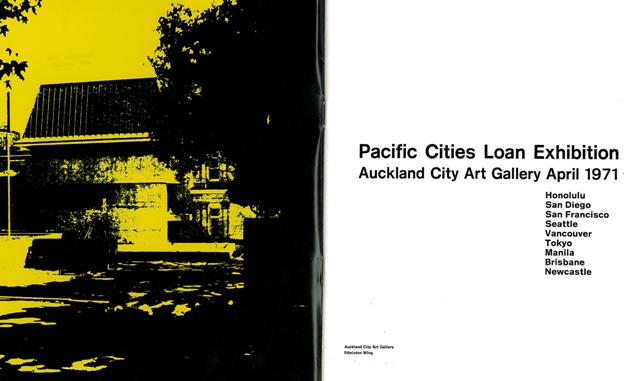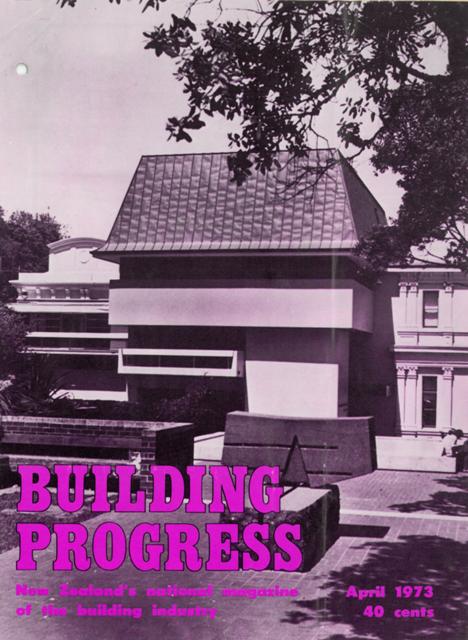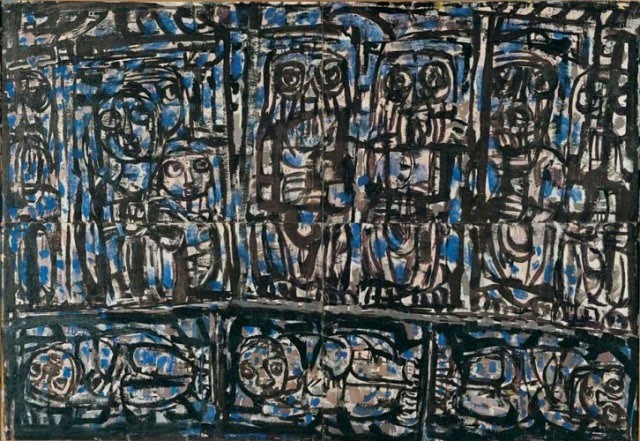Tuesday 17 May 2011
Anna Parlane

Yesterday in the E.H. McCormick Research Library I came across a little catalogue of an exhibition held at the Gallery exactly 40 years ago. Called Pacific Cities, it was a remarkable show of artworks loaned from institutions in nine cities around the Pacific: Honolulu Academy of Arts, Fine Arts Gallery of San Diego, M.H. de Young Memorial Museum in San Francisco, Henry Gallery in Seattle, The Vancouver Art Gallery, The National Museum of Modern Art in Tokyo, The National Museum of the Philippines in Manila, Queensland Art Gallery and the Newcastle Art Gallery.
This international spread was put on to celebrate the opening of the Gallery’s new Edmiston Wing. Officially opened to the public by Governor General Sir Arthur Porrit on the 16th April 1971, this addition to the building had been a long time coming. Funded from a generous bequest made by prominent Auckland citizen Philip Edmiston, the building project had been the subject of planning and discussion since the details of Edmiston’s will were announced in 1946. Decision-making was complicated by calls to erect an entirely new building for the Gallery, but in 1953 the City Council resolved that the Gallery should remain on its historical site.

The Edmiston development was designed in the office of the City architect, Mr E.M. Wainscott and the project architect was Mr B.C. Robinson. The new wing took three years to build, with staff offices relocated to the Town Hall from 1968. The design of the wing was a ‘modernisation’ of the existing Victorian architecture of the building, which mimicked the rhythms of the old façade in a stripped back, modern style.
Moira McLeod, writing for the trade journal Building Progress, waxed lyrical about the new design: “Bold concrete slabs cast in situ with special boxing add to the contrasting light and shade, solid and void, design of the exterior.” She went on to detail interior furnishings of the wing, including the flooring of “manganese brown acid-resistant quarry tiles” and walls covered in “buff-painted Scandinavian jute”; noting especially that “The 65oz bronze deep velvet pile carpet used in the lower galleries and Indian red carpeting on the stairway and upstairs lobbies were special runs by Feltex NZ Ltd.”

The newly austere galleries of the Edmiston Wing provided the perfect stage for the artworks of the Pacific Cities show. This exhibition self-consciously located Auckland in an international network of galleries and museums in a way which prefigured current trends in contemporary art exhibitions. The selection of works was deliberately contemporary and international, with the vast majority of artworks dated within 10 years of the exhibition’s opening in 1971, and several works having been made as recently as 1970.

Ian Fairweather, Epiphany, 1962

Iain Baxter, Bagged Landscape, 1966
Interestingly, given the current success of exhibitions like the Auckland Triennial and the Asia-Pacific Triennial, which are designed to bring local and international art together, Pacific Cities did not include any New Zealand art. The Gallery’s then director, Gil Docking, wrote in the exhibition catalogue “As the host city, we have allotted our galleries to our guests”, and continued on to comment, “Many of us would like to see the Pacific Cities Loan Exhibition become a triennial event on Auckland’s calendar.”